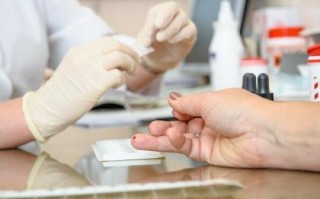VAP-II® analysis is a two-step procedure. First, lipoproteins are separated by Single Vertical Spin density-gradient UC [65], [69]. Plasma density is adjusted with KBr to a density equal to, or greater than, the densest lipoprotein to be separated. This density-adjusted plasma is then introduced into a centrifuge tube and layered under a KBr or NaCl solution of density equal to, or lower than, the density of the least dense lipoprotein to be separated. The tube is then ultracentrifuged in a vertical rotor at approximately 720,000 g for an hour. The discontinuous gradient ensures the sufficient separation of lipoproteins according to their respective flotation rates: a function of their density, size and conformation. The densest ones thus end up in the bottom of the tube, whereas the least dense ones are in the upper zone of the tube [69]. These separated lipoproteins are then quantified using their cholesterol content with an automated continuous enzymatic assay. For that purpose, the centrifuge tubes are placed in a gradient fractionator, and the gradient is continuously drawn from the tube and mixed in a chamber with an enzymatic cholesterol reagent. Absorbance is then measured at 505 nm [65]. The continuous measure of the absorbance is reported as a function of the relative gradient position, and deconvolution of the signal by software-assisted data processing finally allows the determination of the cholesterol concentration associated with each lipoprotein class and subclass, thus providing the lipoprotein profile [66]. Additionally, cholesterol concentrations can be further converted into apoB-equivalent concentrations via an algorithm included in the software [70].
- 1
- 2
- 3
- 4
- 5
- 6
- 7
- 8
- 9
- 10
- 11
- 12
- 13
- 14
- 15
- 16
- 17
- 18
- 19
- 20
- 21
- 22
- 23
- 24
- 25
- 26
- 27
- 28
- 29
- 30
- 31
- 32
- 33
- 34
- 35
- 36
- 37
- 38
- 39
- 40








还木有评论哦,快来抢沙发吧~